 1992 Proton Saga Iswara Dimensions, Size & Specs
1992 Proton Saga Iswara Dimensions, Size & SpecsMeasurements of the 1992 Proton Saga Iswara, engineered for optimal performance and comfort
| Dimensions | |
|---|---|
| Length: | 4280 mm168.5 in14.0 ft |
| Width: | 1655 mm65.2 in5.4 ft |
| Height: | 1360 mm53.5 in4.5 ft |
| Trunk Capacity: | 315 liter11.1 cu ft |
| Weight Specifications | |
| Curb Weight: | 950-990 kg2094-2183 lbs |
| Maximal permitted Weight: | 1400-1440 kg3086-3175 lbs |
| Tire Specifications | |
| Rims Size: |
|
| Tire Sizes: |
|
The Proton Saga Iswara, produced from 1992 to 2003, is a compact sedan that stood as a practical and affordable choice in the Malaysian automotive market. With an overall length of 4,280 mm (168.5 inches), a width of 1,655 mm (65.2 inches), and a height of 1,360 mm (53.5 inches), the Saga Iswara offers a balanced footprint suitable for urban and suburban driving environments. The car's curb weight ranges between 950 to 990 kg (approximately 2,094 to 2,182 pounds), making it relatively lightweight, which contributes to its fuel efficiency and nimble handling. Maximum allowable weight varies from 1,400 to 1,440 kg (3,086 to 3,175 pounds), factoring in passenger and cargo load.
Equipped with 13-inch rims, the Saga Iswara commonly uses tire sizes such as 155/80 R13, 175/70 R13, and 175/70 HR13, providing a balance between ride comfort and road handling. Its luggage compartment spans 315 liters (11.1 cubic feet), offering sufficient storage for everyday needs, making it practical for small families or commuters.
As a sedan, the Saga Iswara carries the classic three-box design while maintaining compact external dimensions that allow easy maneuverability in tight city spaces. Its size and weight class position it well among early 1990s subcompact sedans, often favored for its blend of functionality, economy, and simplicity. Whether for daily commute or small family transportation, the Proton Saga Iswara remains notable for its straightforward design and enduring presence in Southeast Asia's automotive history.
Discover the standout features that make the 1992 Proton Saga Iswara a leader in its class
Have a question? Please check our knowledgebase first.
The Proton Saga Iswara sedan, produced from 1992 to 2003, measures 4280 mm (168.5 inches) in length. This length places it firmly in the compact sedan category, making it practical for urban and suburban driving. Compared to other sedans of its time, the Saga Iswara was moderately sized, offering sufficient space without the bulk of larger mid-size sedans. Its length reflects the balance Proton aimed for between interior comfort and maneuverability.
The width of the Proton Saga Iswara is 1655 mm (65.2 inches). This relatively narrow width translates to decent cabin space while maintaining an easy fit on narrower roads and tight parking spots, typical in urban environments. The modest width helps keep the vehicle light and agile, enhancing fuel efficiency and handling responsiveness. However, compared to wider sedans, it may provide slightly less shoulder space inside the cabin.
The Proton Saga Iswara has a height of 1360 mm (53.5 inches), which contributes to a low-profile appearance and improved aerodynamics. The slightly lower height offers adequate headroom for front and rear passengers, although taller occupants may find it more snug compared to taller sedans. The aerodynamic profile helps optimize fuel efficiency and reduces wind noise at highway speeds.
The curb weight of the Proton Saga Iswara ranges between 950 to 990 kg (approximately 2094 to 2183 lbs). This lightweight build contributes positively to its fuel efficiency and nimble handling characteristics. A lower curb weight means the engine requires less energy to move the vehicle, resulting in better fuel consumption figures and brisk acceleration for a compact sedan. However, the lighter build might also translate to a less solid feel compared to heavier vehicles.
The maximum weight capacity of the Proton Saga Iswara varies between 1400 to 1440 kg (3086 to 3175 lbs), indicating the total permissible weight when fully loaded including passengers, cargo, and fuel. This suggests that the car can comfortably carry around 4-5 occupants along with luggage without adversely affecting performance or safety. The design ensures that everyday commuting and moderate cargo loads stay well within safe operational limits.
The Proton Saga Iswara offers a luggage capacity of 315 liters (approximately 11.1 cubic feet), which is quite respectable for a compact sedan of its class and era. This trunk space is suitable for routine shopping trips, weekend getaways, or transporting smaller luggage for family use. Compared to other compact sedans, it provides a balanced cargo area that most users find sufficient without compromising passenger space.
The Proton Saga Iswara, with a length of 4280 mm (168.5 inches), width of 1655 mm (65.2 inches), and height of 1360 mm (53.5 inches), generally fits comfortably within a standard single-car garage. Standard garage dimensions are typically around 6 meters (19.7 ft) in length and 3 meters (9.8 ft) in width, providing ample space for the Saga Iswara with extra clearance for easy access around the car. It’s advisable to allow at least 30-50 cm of clearance on all sides to avoid door dings and facilitate movement.
The Proton Saga Iswara, which succeeded the original Proton Saga, saw minor dimensional changes consistent with evolutionary improvements. The Iswara's length of 4280 mm and width of 1655 mm are very close to its predecessor's dimensions, maintaining a compact sedan size. The design tweaks in the Iswara mainly focused on aesthetic updates and slight interior enhancements rather than significant changes in size. Overall, the Iswara offered slightly improved ergonomics and potentially modest weight advantages, contributing to a better driving experience.
In the 1990s, the Proton Saga Iswara’s dimensions and luggage capacity were competitive among compact sedans such as the Toyota Corolla, Honda Civic, and Nissan Sentra of that period. While its length of 4280 mm and luggage capacity of 315 liters might be slightly smaller than some rivals that offered trunk volumes up to around 400 liters, it balanced maneuverability and practicality effectively. The smaller tire sizes (13-inch rims with tire widths ranging from 155 to 175 mm) also reflect a focus on economy and ride comfort.
The Proton Saga Iswara rides on 13-inch rims, with tire size options including 155/80 R13, 175/70 R13, and 175/70 HR13. These tire dimensions emphasize fuel efficiency, cost-effectiveness, and comfort. The narrower 155 mm tires typically enhance fuel economy but offer slightly less grip compared to the wider 175 mm tires, which improve stability and cornering. The 13-inch rims contribute to a smooth ride by allowing higher-profile tires that absorb road imperfections, balancing comfort and handling for city and highway driving.
Discover similar sized cars.
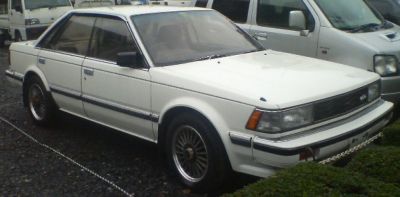
| Production: | 1983-1986 |
|---|---|
| Model Year: | 1983 |
| Length: | 4360 mm171.7 in |
| Width: | 1690 mm66.5 in |
| Height: | 1400 mm55.1 in |
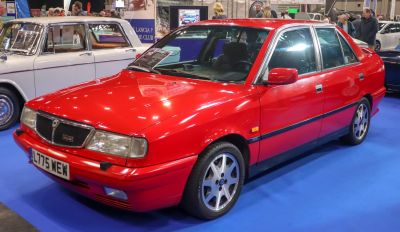
| Production: | 1989-1999 |
|---|---|
| Model Year: | 1989 |
| Length: | 4345 mm171.1 in |
| Width: | 1700 mm66.9 in |
| Height: | 1417-1430 mm55.8-56.3 in |
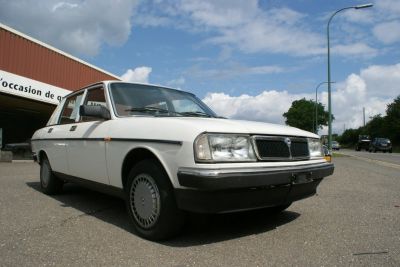
| Production: | 1982-1984 |
|---|---|
| Model Year: | 1983 |
| Length: | 4355 mm171.5 in |
| Width: | 1706 mm67.2 in |
| Height: | 1400 mm55.1 in |
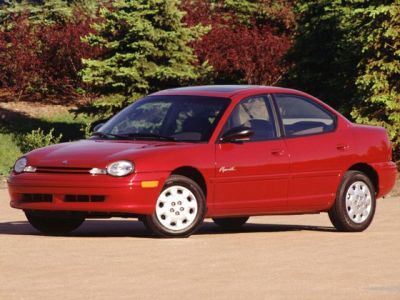
| Production: | 1994-1999 |
|---|---|
| Model Year: | 1994 |
| Length: | 4364 mm171.8 in |
| Width: | 1708 mm67.2 in |
| Height: | 1391 mm54.8 in |
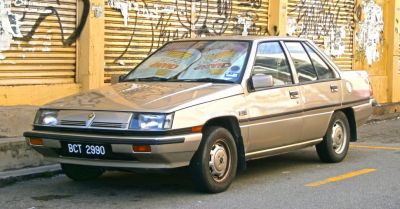
| Production: | 1985-1992 |
|---|---|
| Model Year: | 1985 |
| Length: | 4280 mm168.5 in |
| Width: | 1655 mm65.2 in |
| Height: | 1360 mm53.5 in |
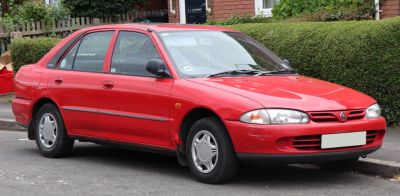
| Production: | 1993-2007 |
|---|---|
| Model Year: | 1993 |
| Length: | 4360 mm171.7 in |
| Width: | 1680-1690 mm66.1-66.5 in |
| Height: | 1385 mm54.5 in |
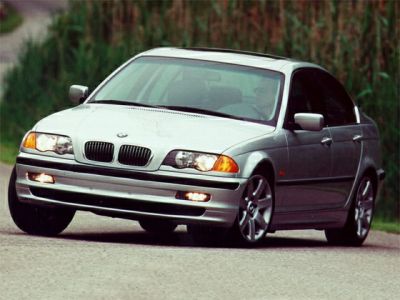
| Production: | 1990-2000 |
|---|---|
| Model Year: | 1991 |
| Length: | 4352-4433 mm171.3-174.5 in |
| Width: | 1698-1843 mm66.9-72.6 in |
| Height: | 1393-1568 mm54.8-61.7 in |
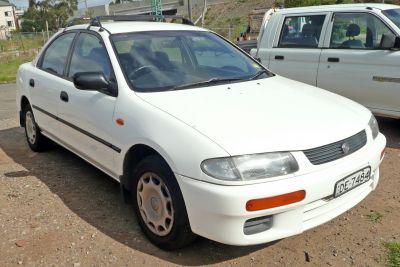
| Production: | 1994-1998 |
|---|---|
| Model Year: | 1994 |
| Length: | 4340 mm170.9 in |
| Width: | 1695-1710 mm66.7-67.3 in |
| Height: | 1420 mm55.9 in |
